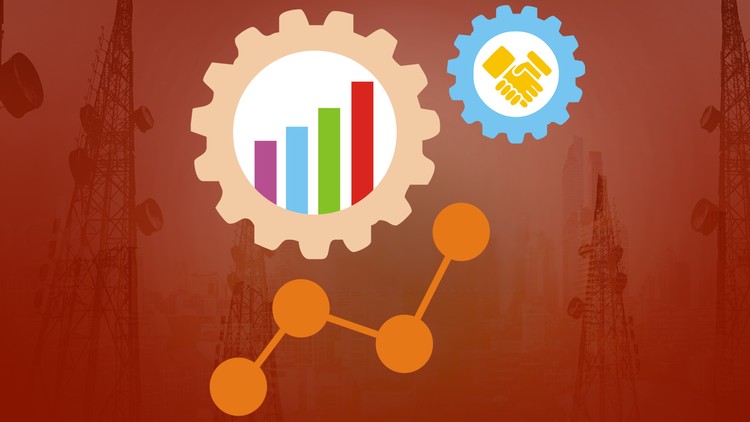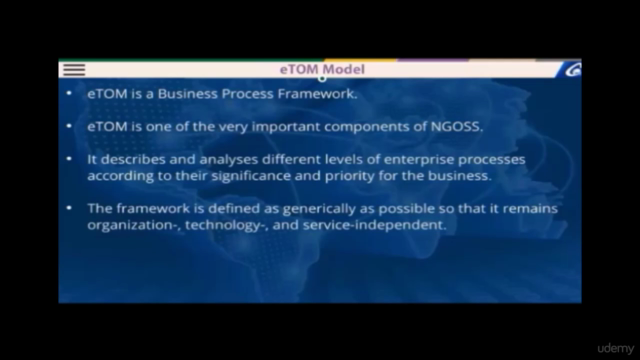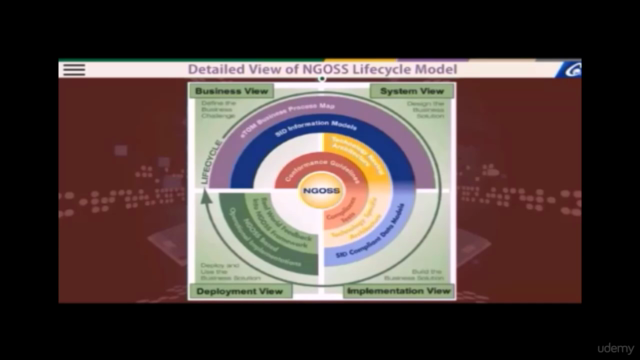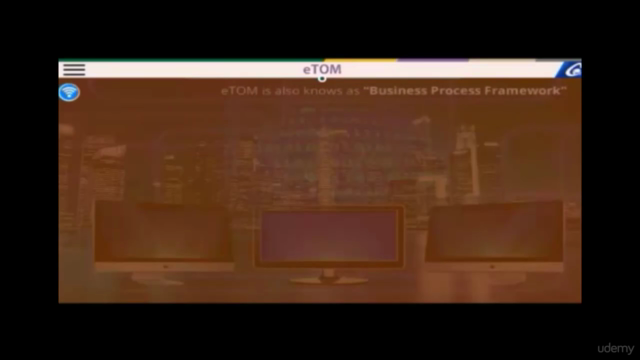Introduction to Telecom Business Process

Why take this course?
🌟 Introduction to Telecom Business Process: Master the Frameworks of the Industry! 🌟
Course Description:
Dive into the world of telecommunications and gain a comprehensive understanding of the business processes that underpin this dynamic industry. Our course, Introduction to Telecom Business Process, is meticulously crafted to provide you with an in-depth exploration of the key frameworks used within the domain, as championed by industry leaders like NGOSS (New Generation Operations Systems and Software).
What You'll Discover:
📚 NGOSS Overview: Understand NGOSS as a comprehensive toolkit that aligns with industry-agreed specifications and guidelines, covering all crucial business and technical areas. This framework serves as a repository for models, documents, and supporting material to facilitate the production of new-generation OSS or BSS solutions.
NGOSS Framework Components:
- eTOM (Business Process Framework): Get to grips with eTOM, which categorizes all business activities performed by a service provider into a set of high-level processes.
- SID Model (Information Framework): Learn how SID standardizes data representation for sharing and reuse across different OSS and BSS applications from various vendors.
- TNA (Technology Neutral Architecture) & Contract Interfaces (Integration Framework): Discover how TNA provides an architecture that is sustainable through technology changes, integrating other applications via interfaces.
- NGOSS Compliance Element: Explore the suite of tests for compliance to eTOM, SID, TNA, and contract interface components, ensuring your solutions meet the industry standards.
The Evolution of Frameworx:
- Business Process Framework: The new name for eTOM, ensuring continuity with the evolving frameworks.
- Information Framework: The transformation from SID to a more encompassing and up-to-date approach.
- Integration Framework: The transition from TNA and Contract Interfaces to facilitate seamless system integration.
The Essentials of eTOM, SID, and TNA:
- eTOM: A reference framework that captures all the business activities a service provider performs, crucial for operational excellence.
- SID: A standardized method for representing data, enabling interoperability between OSS and BSS systems from different providers.
- TNA & Interfaces: An architecture designed to be resilient across technology shifts, integrating disparate applications through a set of defined interfaces.
Why This Course? By enrolling in this course, you'll gain a solid foundation in the business processes and frameworks that are critical for success in the telecom industry. Whether you're new to the field or looking to deepen your expertise, this course will equip you with the knowledge and skills to excel.
🎓 Join Us on This Journey! Embark on a journey through the complex yet critical world of telecom business processes. With our expert guidance and comprehensive curriculum, you'll be well-equipped to navigate and thrive in this competitive landscape. Let's unlock your potential together! 📚✨
Course Gallery




Loading charts...